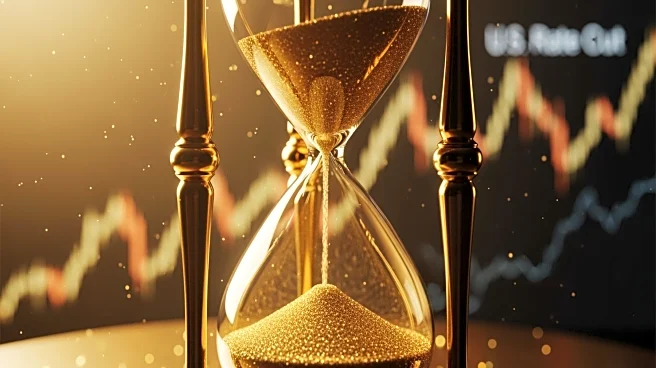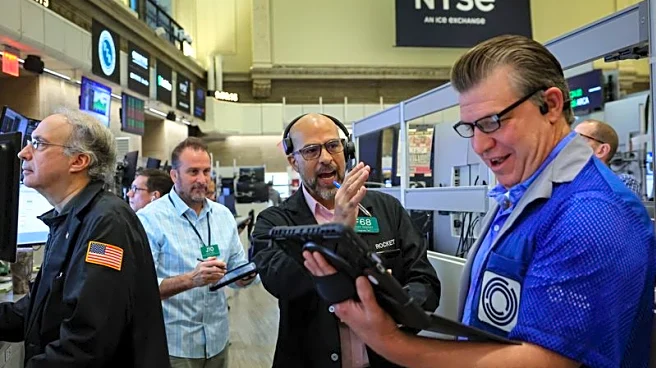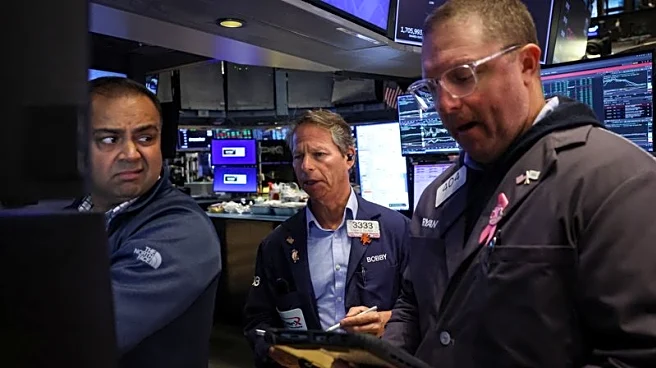What's Happening?
Gold prices have risen for the fifth consecutive session, reaching their highest level in over three weeks. This increase is attributed to the reopening of the U.S. government, which is expected to resume
the flow of economic data and bolster expectations for further interest rate cuts. Spot gold increased by 0.4% to $4,215.87 per ounce, while U.S. gold futures for December delivery rose by 0.2% to $4,219.90 per ounce. The recent government shutdown, the longest in U.S. history, had halted the release of critical economic data. Analysts suggest that the prospect of weak economic data and ongoing demand from central banks will continue to support gold prices. Additionally, the Federal Reserve is anticipated to lower its key interest rate by 25 basis points next month, which could further benefit non-yielding gold in a low-interest-rate environment.
Why It's Important?
The rise in gold prices highlights the metal's role as a safe haven during economic uncertainties and low-interest-rate environments. The end of the government shutdown is expected to provide clarity and stability, potentially influencing Federal Reserve policy decisions. Investors and central banks may continue to favor gold as a strategic investment, given the current economic conditions. The anticipated interest rate cut by the Federal Reserve could further drive demand for gold, impacting financial markets and investment strategies. This development underscores the interconnectedness of government policy, economic data, and commodity markets.
What's Next?
With the government reopening, the U.S. Labor Department is expected to prioritize the release of November employment and inflation reports. These reports will be crucial for Federal Reserve officials as they prepare for their December policy meeting. The potential interest rate cut by the Federal Reserve could lead to further increases in gold prices, as investors seek safe-haven assets. Market participants will closely monitor economic data releases and central bank policies to gauge future trends in gold prices and broader financial markets.













